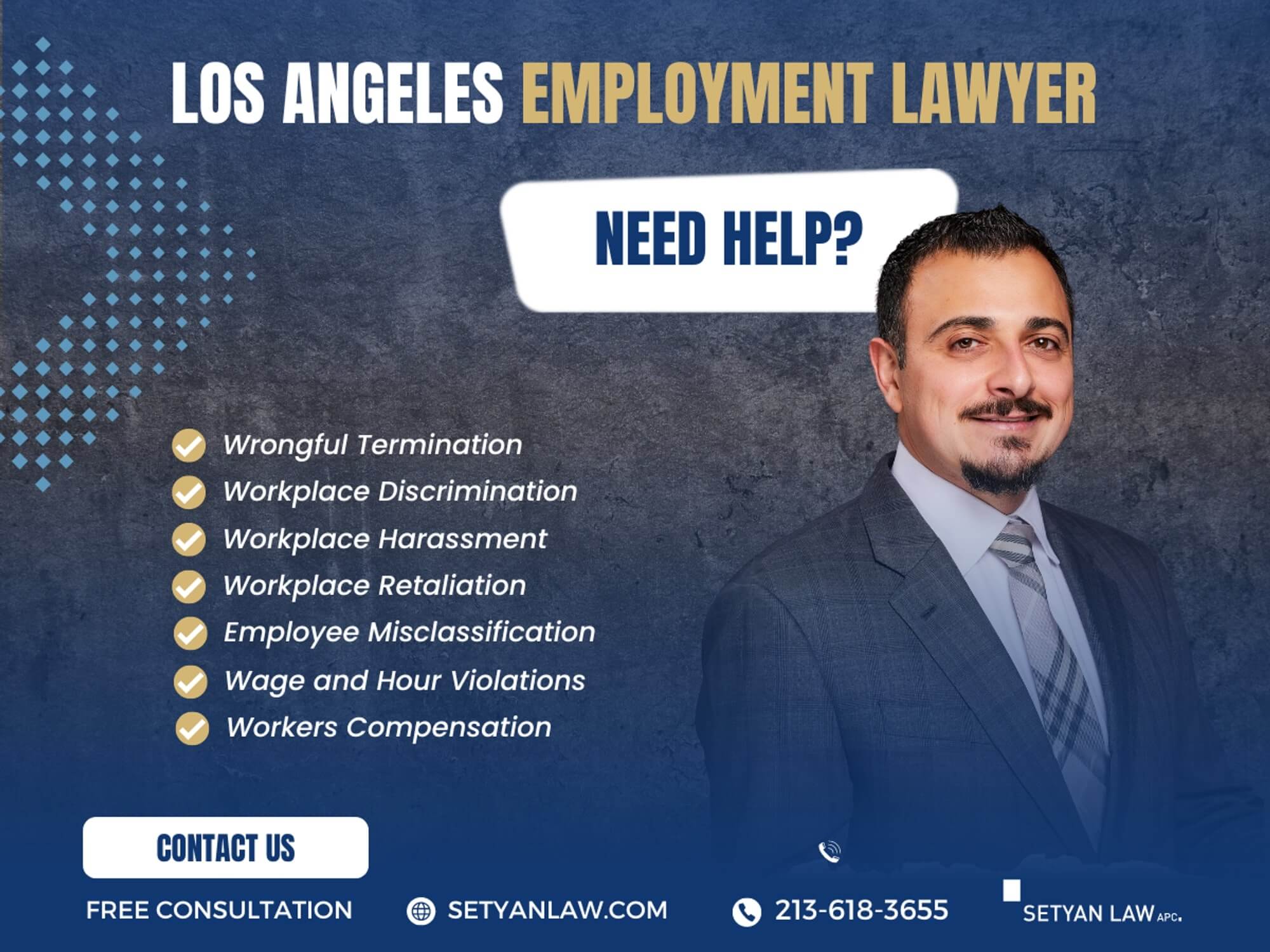Updated April 21, 2025
Understanding Bereavement Leave Rights in California
California’s workforce gained significant protections when Assembly Bill 1949 took effect on January 1, 2023, establishing mandatory bereavement leave for eligible employees. This landmark legislation acknowledges the profound impact of losing a loved one and ensures workers have adequate time to grieve without jeopardizing their employment. The following comprehensive guide explores everything California employees and employers need to understand about bereavement leave entitlements, requirements, and protections under this groundbreaking law.
The emotional toll of losing a family member can be overwhelming, often affecting one’s ability to maintain regular work responsibilities. Recognizing this reality, California has taken a progressive step by implementing statutory bereavement leave provisions that provide workers with essential time to process their grief, attend memorial services, and handle necessary arrangements following a loved one’s passing.
Prior to this legislation, bereavement policies varied widely among employers, leaving many workers vulnerable during times of personal loss. Now, with standardized protections in place, California employees can focus on navigating their grief without the added stress of potentially losing their jobs or facing workplace discrimination for taking necessary time off.
This guide aims to clarify the nuances of California’s bereavement leave law, addressing eligibility criteria, leave duration, compensation considerations, documentation requirements, and legal protections. Whether you’re an employee seeking to understand your rights or an employer working to ensure compliance, this resource provides valuable insights into this important workplace protection.
Details of Bereavement Leave Laws in California
California law requires most employers to provide up to five days of bereavement leave to employees who have lost a family member, effective January 1, 2023.
Here’s a more detailed explanation:
Mandatory Leave:
California’s Assembly Bill 1949 mandates that employers with five or more employees, and all public employers, must grant up to five days of bereavement leave to eligible employees.
Family Member Definition:
The law defines a “family member” as a spouse, child, parent, sibling, grandparent, grandchild, domestic partner, or parent-in-law.
Leave Duration and Use:
Employees can take the five days of leave consecutively or intermittently, and it must be taken within three months of the family member’s death.
Paid or Unpaid:
Whether the leave is paid or unpaid depends on the employer’s policy, but employees can use accrued vacation, sick time, or other paid time off to cover the leave.
Documentation:
Employers can request documentation of the death, such as a death certificate or obituary, but they must maintain confidentiality.
No Annual Cap:
There is no annual cap on the number of bereavement leave days an employee can take, meaning they can take up to five days each time they face such a situation.
Eligibility:
To be eligible for bereavement leave, an employee must have been employed by the company for at least 30 days.
Eligibility Requirements for Bereavement Leave
Under California’s bereavement leave law, coverage extends to a substantial portion of the state’s workforce, though certain conditions must be met to qualify for these protections. Primarily, the legislation applies to employers with five or more employees, encompassing both private businesses and public sector organizations throughout the state. This broad application ensures that the majority of California’s workforce receives these important protections during times of personal loss.
For employees to qualify for bereavement leave benefits, they must have been employed by their current employer for a minimum of 30 days prior to requesting the leave. This requirement establishes a reasonable tenure threshold before bereavement protections take effect, balancing employer needs with employee protections. The 30-day employment prerequisite applies regardless of whether the employee works full-time or part-time, ensuring equitable access to bereavement leave across different employment arrangements.
It’s worth noting that certain categories of workers face different eligibility considerations. State employees covered by Government Code section 19859.3 operate under separate bereavement provisions specific to their employment classification. Additionally, workers covered by collective bargaining agreements may have different bereavement terms, provided those agreements offer at least the minimum protections required by law – specifically, a minimum of five days bereavement leave, provisions for working conditions and wages, and premium compensation for overtime work at rates of at least 1.3 times the minimum wage.
Understanding these eligibility parameters helps both employers and employees navigate bereavement situations appropriately. Employees should verify their employment duration and employer size to confirm their eligibility, while employers must ensure their policies align with these statutory requirements to maintain legal compliance. When questions about eligibility arise, consulting with human resources professionals or employment law specialists can provide clarity about specific circumstances.
Qualifying Family Members for Bereavement Leave
California’s bereavement leave provisions clearly define which family relationships qualify for protected time off following a death. This specificity helps both employers and employees understand when bereavement leave entitlements apply. The law recognizes the profound impact of losing immediate family members and extends protections accordingly.
Under California law, employees may take bereavement leave following the death of these specific family members: spouse, domestic partner, child, parent, sibling, grandparent, grandchild, and parent-in-law. This comprehensive list acknowledges the significance of both nuclear and extended family relationships, recognizing that grief impacts individuals differently depending on their unique family structures and dynamics. The inclusion of domestic partners and in-laws demonstrates the law’s acknowledgment of diverse family configurations in modern society.
Importantly, employers retain the discretion to expand their bereavement policies beyond these statutorily defined relationships. Some organizations choose to extend bereavement leave benefits to accommodate the loss of other significant individuals in an employee’s life, such as close friends, aunts, uncles, cousins, or other meaningful relationships. While not legally required, these expanded policies often reflect an employer’s commitment to supporting employee wellbeing during difficult times.
Each qualifying relationship entitles an employee to a separate bereavement leave period. For instance, if an employee experiences the unfortunate circumstance of losing multiple family members within the same year, they would be entitled to take up to five days of bereavement leave for each loss. This provision recognizes that grief is not limited by calendar constraints and ensures employees receive appropriate support regardless of when losses occur.
Understanding these relationship qualifications helps employees properly request leave and assists employers in appropriately administering their bereavement policies. When questions arise about whether a particular relationship qualifies for bereavement leave, consulting the specific statutory language or seeking guidance from employment law professionals can provide necessary clarification.
Duration and Timing of Bereavement Leave
California’s bereavement leave law establishes clear parameters regarding how much time employees may take off and when that time must be used. Understanding these temporal aspects helps both employers and employees effectively navigate the bereavement process while maintaining workplace continuity.
The legislation provides eligible employees with up to five days of bereavement leave following the death of a qualifying family member. This five-day allotment represents the minimum requirement under California law, though employers may voluntarily offer more generous leave periods. The five-day entitlement applies separately for each qualifying death, meaning an employee who experiences multiple losses would be eligible for up to five days of leave for each instance.
Notably, employees have flexibility in how they structure their bereavement leave. The five days need not be taken consecutively – instead, employees may split their leave across different days within a specified timeframe. This accommodation recognizes that grief and related responsibilities often unfold over time rather than being confined to the immediate aftermath of a loss.
California law stipulates that bereavement leave must be completed within three months following the death of the family member. This three-month window provides reasonable flexibility for employees to address various needs that may arise during the bereavement process. Some employees might require immediate time off to process their initial grief and attend funeral services, while others might need to take days later to handle estate matters, clear out a deceased relative’s home, or attend to other responsibilities that emerge in the months following a death.
This flexibility in timing acknowledges the individualized nature of grief and the varying responsibilities that accompany a loved one’s passing. By allowing employees to distribute their bereavement days across a three-month period, the law creates a more supportive framework that accommodates different cultural practices, personal coping mechanisms, and practical considerations that arise during bereavement.
Compensation During Bereavement Leave
Understanding the financial implications of taking bereavement leave is crucial for California employees navigating the difficult period following a loved one’s death. While California law mandates that employers provide bereavement leave, it does not require that this time off be paid, creating important considerations for workers planning to utilize this benefit.
Under the current legislation, the five days of guaranteed bereavement leave are not statutorily required to be compensated by employers. This means that, at minimum, employers must allow eligible employees to take the time off, but are not obligated to provide salary continuation during this period. However, this baseline requirement does not prevent employers from offering paid bereavement leave as part of their company policies or benefits packages. Many organizations throughout California have established paid bereavement leave programs that exceed the legal minimum, recognizing the value of supporting employees through difficult personal circumstances.
For employees without access to paid bereavement leave, California law provides an important alternative pathway to compensation during this time. The legislation specifically requires employers to permit employees to use other forms of accrued paid leave to cover their bereavement absence if they choose to do so. This means workers can apply vacation time, paid personal days, or accrued sick leave toward their bereavement period to avoid loss of income. This provision ensures employees have options for maintaining financial stability while taking necessary time to grieve.
When considering how to structure bereavement leave, employees should review their company’s specific policies regarding paid time off and leave integration. Some organizations may have established procedures for how different types of leave can be combined or substituted. Consulting with human resources representatives can provide clarity about available options and help employees make informed decisions about how to manage their time off while minimizing financial impact.
For employers developing or updating bereavement policies, considerations around compensation represent an opportunity to demonstrate organizational values and commitment to employee wellbeing. While paid bereavement leave exceeds legal requirements, many employers find that offering this benefit enhances employee loyalty, improves workplace morale, and aligns with organizational commitments to supporting staff during life’s most challenging moments.
Documentation Requirements
California’s bereavement leave law establishes reasonable documentation standards that balance employer needs for verification with employee privacy during sensitive times of loss. Understanding these requirements helps ensure smooth administration of bereavement leave policies while respecting the dignity of grieving employees.
Under the law, employers may request documentation to verify the death of the family member for whom an employee is taking bereavement leave. This verification serves legitimate business purposes by confirming the appropriate use of leave entitlements. However, the legislation includes important timing considerations that acknowledge the practical realities facing grieving employees. Specifically, while documentation may be requested, employees are not required to provide this verification before beginning their bereavement leave. Instead, the law allows employees up to 30 days from the first day of their bereavement leave to submit the requested documentation.
This 30-day timeframe recognizes that obtaining official documentation can be challenging during the immediate aftermath of a loss, when employees are managing numerous emotional and logistical concerns. By providing this reasonable window for documentation submission, the law ensures employees can access needed leave promptly while still fulfilling verification requirements.
The legislation outlines several acceptable forms of documentation that satisfy verification requirements. These include death certificates, published obituaries, and written verification of death, burial, or memorial services from authorized entities such as mortuaries, funeral homes, burial societies, crematoriums, religious institutions, or government agencies. This range of acceptable documentation provides flexibility for employees to fulfill verification requirements based on their specific circumstances and available resources.
Importantly, California law includes strong confidentiality protections for bereavement documentation. Employers who receive such documentation must maintain its confidentiality and are prohibited from disclosing the information except when necessary for internal personnel or legal purposes, or when required by law. These privacy safeguards acknowledge the sensitive nature of bereavement documentation and protect employees from unnecessary disclosure of personal information during vulnerable times.
For both employers and employees, understanding these documentation parameters helps facilitate appropriate administration of bereavement leave while maintaining necessary respect for privacy and grief. Clear communication about documentation expectations, timeframes, and confidentiality protections can help prevent misunderstandings and ensure smooth implementation of bereavement leave policies.
Job Protection and Anti-Retaliation Provisions
California’s bereavement leave law includes robust protections designed to safeguard employees who exercise their right to take time off following the death of a family member. These protections form a critical component of the legislation, ensuring that grieving employees can utilize their bereavement leave without fear of negative employment consequences.
The law explicitly prohibits employers from discriminating against, retaliating against, or taking adverse employment actions toward employees who request or use bereavement leave. This comprehensive protection covers a wide range of potential adverse actions, including termination, demotion, suspension, and other negative employment decisions. By establishing these clear prohibitions, the legislation creates a protective framework that allows employees to focus on processing their grief rather than worrying about job security.
Upon returning from bereavement leave, employees are entitled to reinstatement to the same or a comparable position. This job restoration right ensures continuity of employment and prevents employers from using bereavement absences as opportunities to reassign employees to less favorable positions or otherwise alter their employment terms. The reinstatement provision aligns California’s bereavement leave protections with other job-protected leave laws, creating consistency in how various types of necessary absences are handled.
The anti-retaliation provisions extend beyond direct users of bereavement leave to also protect employees who provide information or file complaints related to bereavement leave rights. This broader protection encourages workplace accountability by ensuring that employees can report potential violations without fear of reprisal. By protecting both leave-takers and those who advocate for proper leave administration, the law creates multiple layers of safeguards for employee rights.
For employees who believe their bereavement leave rights have been violated, California law provides clear pathways for seeking redress. Affected individuals can file complaints with the California Civil Rights Department (CRD), which investigates potential violations and works to resolve disputes. Additionally, employees may obtain right-to-sue letters from the CRD, enabling them to pursue private legal action against employers who violate bereavement leave protections. These enforcement mechanisms provide meaningful recourse for employees whose rights have been infringed upon and create accountability for employers who fail to comply with legal requirements.
Interaction with Other Leave Entitlements
California’s bereavement leave provisions operate within a broader ecosystem of employee leave rights, creating important intersections with other protected time off. Understanding how bereavement leave interacts with other leave entitlements helps employees maximize their available benefits and assists employers in properly administering various leave programs.
A fundamental principle of California’s bereavement leave law is that it establishes a separate and distinct entitlement that does not diminish or replace other forms of protected leave. Taking bereavement leave does not reduce an employee’s eligibility or available time for other statutory leave programs. This separation ensures that employees facing the loss of a family member don’t have to sacrifice other important leave protections to address their bereavement needs.
The California Family Rights Act (CFRA) provides eligible employees with up to 12 weeks of protected leave to care for their own serious health condition, assist a family member with a serious health condition, or bond with a new child. Importantly, using bereavement leave does not count against this 12-week CFRA entitlement. Similarly, bereavement leave remains separate from Pregnancy Disability Leave, which provides up to four months of leave for employees disabled by pregnancy, childbirth, or related medical conditions.
For employees managing multiple life challenges simultaneously, this separation of leave entitlements creates valuable flexibility. For instance, an employee who experiences a family death while also managing their own serious health condition can utilize both bereavement leave and CFRA leave without one reducing the other. This approach recognizes that life’s challenges often overlap and ensures that employees have access to appropriate support for each distinct circumstance they face.
Employers administering multiple leave programs should maintain clear documentation regarding which type of leave employees are using at any given time. This administrative clarity helps prevent confusion about remaining leave balances and ensures proper implementation of various leave protections. Employees navigating multiple leave needs may benefit from consulting with human resources professionals or employment attorneys to develop strategies for maximizing available protections while meeting both personal needs and work responsibilities.
Employer Policies and Compliance Requirements
For California businesses, implementing compliant bereavement leave policies requires careful attention to both statutory requirements and organizational values. Effective policy development ensures legal compliance while potentially enhancing employee satisfaction and retention through thoughtful bereavement support.
Employers must ensure their bereavement leave policies meet or exceed the minimum requirements established by California law. At minimum, policies must provide five days of bereavement leave for qualifying family deaths, allow employees to use accrued paid leave during bereavement absences if desired, and include appropriate job protection provisions. Policies should clearly define eligible family relationships, outline documentation expectations within legal parameters, and establish procedures for requesting and recording bereavement leave.
Organizations with existing bereavement policies must review and potentially update their approaches to ensure alignment with current legal requirements. If existing policies provide fewer than five days of leave or don’t cover all statutorily protected family relationships, revisions are necessary to achieve compliance. However, employers with more generous existing policies – such as those offering paid bereavement leave or covering additional family relationships – can maintain these enhanced benefits while ensuring their foundational provisions meet legal minimums.
Effective communication about bereavement policies plays a crucial role in successful implementation. Employers should include clear information about bereavement leave in employee handbooks, onboarding materials, and other policy documents. This information should be readily accessible to all employees and written in straightforward language that clearly explains eligibility criteria, leave duration, request procedures, and available support resources. Proactive communication about bereavement policies helps ensure employees understand their rights and can access appropriate support during difficult times.
Training for managers and human resources personnel represents another important compliance consideration. Staff responsible for administering leave programs should understand the specific requirements of California’s bereavement leave law, including anti-retaliation provisions, documentation standards, and confidentiality requirements. This training helps prevent inadvertent violations and ensures consistent policy application across the organization.
For small employers with 5-19 employees, awareness of California’s small employer family leave mediation program is particularly important. This program provides a structured mediation process for resolving disputes related to various family leaves, including bereavement leave. Understanding this resource can help small employers address potential conflicts constructively while minimizing legal exposure.
Special Considerations for Small Employers
California’s bereavement leave requirements apply to employers with as few as five employees, creating unique implementation challenges and considerations for small businesses. Understanding these special circumstances helps small employers navigate compliance requirements while maintaining operational stability.
Small businesses often operate with limited administrative resources and tighter staffing margins, making leave management particularly challenging. When an employee takes bereavement leave, small organizations may face significant operational impacts, especially if the absent employee performs essential functions. Developing contingency plans for coverage during bereavement absences helps small employers maintain business continuity while supporting grieving employees. These plans might include cross-training staff on critical functions, establishing relationships with temporary staffing agencies, or creating documented procedures that facilitate work handoffs during absences.
California recognizes the unique challenges facing small employers through its small employer family leave mediation program. This program, administered by the California Civil Rights Department, applies to employers with 5-19 employees and provides a structured mediation process for resolving disputes related to various family leaves, including bereavement leave. Before filing a civil action over alleged bereavement leave violations, employees must first participate in this mediation process if requested by their small employer. This mediation opportunity creates space for constructive resolution of disputes while potentially avoiding costly litigation.
For small employers developing bereavement policies, balancing compliance requirements with operational realities requires thoughtful planning. While all covered employers must provide the minimum five days of bereavement leave, small businesses may need to be particularly strategic about how they structure related policies. For instance, small employers might develop detailed procedures for leave notification and work handoff to minimize disruption, or establish relationships with on-call workers who can provide coverage during employee absences.
Despite implementation challenges, many small employers find that supportive bereavement policies yield significant benefits. Employees who receive appropriate support during times of loss often demonstrate increased loyalty and engagement upon their return. Additionally, organizations that handle bereavement situations compassionately often develop stronger workplace cultures and enhanced reputations within their communities. By viewing bereavement policies as investments in employee wellbeing rather than merely compliance requirements, small employers can transform potential challenges into opportunities for organizational strengthening.
Employee Rights and Responsibilities
Navigating bereavement leave effectively requires employees to understand both their protected rights and their corresponding responsibilities under California law. This balanced awareness helps ensure smooth implementation of bereavement leave while maintaining appropriate workplace communication and accountability.
Employees have the right to take up to five days of bereavement leave following the death of a qualifying family member, regardless of whether their employer has an established bereavement policy. This entitlement exists independently of other leave rights and cannot be denied to eligible employees who have worked for their employer for at least 30 days. Employees also have the right to use accrued paid leave (such as vacation or sick time) during bereavement absences if they choose, potentially mitigating the financial impact of unpaid bereavement time.
Along with these rights come certain responsibilities that help facilitate appropriate leave administration. Employees should follow their employer’s established procedures for requesting bereavement leave, including providing reasonable notice when possible. While the emotional nature of bereavement may sometimes prevent advance notice, communicating with employers as promptly as circumstances allow helps organizations manage workflow and coverage needs appropriately.
If an employer requests documentation of the family member’s death, employees must provide this verification within 30 days of beginning their bereavement leave. While employees aren’t required to submit documentation before starting leave, understanding this subsequent requirement helps them prepare accordingly. Gathering appropriate documentation – such as death certificates, obituaries, or funeral home statements – during the bereavement period ensures timely submission when required.
Employees should also maintain awareness of the three-month timeframe within which bereavement leave must be completed. This understanding helps with planning how to distribute leave days most effectively based on individual circumstances and needs. Some employees might choose to take all five days immediately following the death, while others might reserve some time for later memorial services or estate matters. This planning flexibility represents an important aspect of how employees can exercise their bereavement rights effectively.
If employees believe their bereavement leave rights have been violated – through denial of leave, retaliation, or other adverse actions – they have the responsibility to address these concerns through appropriate channels. This might involve discussing the situation with human resources, filing a complaint with the California Civil Rights Department, or consulting with an employment attorney. Taking timely action helps protect individual rights while also reinforcing the importance of bereavement leave protections more broadly.
Enforcement and Remedies for Violations
When bereavement leave rights are violated, California law provides clear enforcement mechanisms and remedies to address these infractions. Understanding these processes helps both employees seeking redress and employers working to maintain compliance with legal requirements.
The California Civil Rights Department (CRD) serves as the primary enforcement agency for bereavement leave violations. Employees who believe their rights have been infringed upon can file complaints with the CRD, initiating an investigation into the alleged violation. The CRD’s enforcement authority covers various potential violations, including denial of bereavement leave, retaliation for requesting or taking leave, failure to reinstate employees to comparable positions, and other adverse actions related to bereavement leave usage.
The complaint process typically begins with filing a formal complaint with the CRD, which then conducts an investigation to determine whether a violation occurred. This investigation may include interviews with relevant parties, document review, and assessment of workplace policies and practices. If the CRD finds evidence of a violation, it works to resolve the situation through various means, potentially including mediation, settlement agreements, or administrative actions against non-compliant employers.
For small employers with 5-19 employees, the enforcement process includes an additional step through the small employer family leave mediation program. Before filing a civil action over alleged bereavement leave violations against these smaller organizations, employees must first participate in mediation if requested by their employer. This mediation opportunity creates space for potential resolution before proceeding to more formal legal actions.
Beyond administrative remedies through the CRD, employees may also pursue civil litigation for bereavement leave violations. To initiate this process, employees typically must first obtain a right-to-sue letter from the CRD, which authorizes them to proceed with a private lawsuit. Through civil litigation, employees may seek various remedies, potentially including reinstatement, back pay, compensation for emotional distress, and in some cases, punitive damages designed to deter future violations.
Employers found to have violated bereavement leave requirements may face significant consequences, including financial liability, damage to reputation, and potential corrective action requirements. These potential outcomes underscore the importance of proactive compliance with bereavement leave provisions. For many organizations, investing in proper policy development, staff training, and thoughtful leave administration represents a far more cost-effective approach than addressing violations after they occur.
Cultural Considerations in Bereavement Leave
Grief practices and mourning traditions vary significantly across different cultural, religious, and ethnic backgrounds, creating important considerations for both employers and employees navigating bereavement leave. Understanding these diverse perspectives helps create more inclusive and supportive bereavement policies that respect individual differences while maintaining appropriate workplace structures.
Many cultural traditions involve specific mourning periods that extend beyond the five days provided under California law. For instance, some Jewish mourning practices include a seven-day shiva period immediately following burial, while certain Hindu traditions observe thirteen days of formal mourning. Muslim funeral practices often emphasize prompt burial, ideally within 24 hours of death, creating immediate leave needs. Various cultural traditions may also include memorial gatherings at specific intervals following death, such as 40 days, 100 days, or one year after the passing.
These diverse practices highlight the potential limitations of standardized bereavement leave policies. While California law establishes important minimum protections, the five-day allotment may not fully accommodate the needs of employees from backgrounds with extended mourning traditions. Progressive employers increasingly recognize these variations by developing flexible bereavement policies that acknowledge cultural differences or by supplementing bereavement leave with other accommodations such as flexible scheduling, remote work options, or additional unpaid leave when appropriate.
For employees navigating bereavement within specific cultural contexts, effective communication with employers becomes particularly important. Explaining relevant cultural practices and associated time needs helps employers understand leave requests within their proper context. While employers aren’t legally required to provide additional leave beyond statutory minimums, many organizations willingly make reasonable accommodations when they understand the cultural significance of specific practices.
Some organizations enhance their cultural competence around bereavement by providing education and resources for managers and HR professionals. This might include information about diverse mourning traditions, guidance on having culturally sensitive conversations about bereavement, and frameworks for considering accommodation requests. These educational efforts help create workplace environments where employees feel respected and supported during difficult times, regardless of their cultural background.
The three-month window for completing bereavement leave under California law provides some flexibility for accommodating diverse cultural practices. Employees can strategically distribute their five days to align with significant cultural observances, even if those occur weeks or months after the death. This flexibility, while limited, offers some opportunity for employees to honor cultural traditions while working within statutory parameters.
Resources for Grieving Employees
Beyond legal protections, employees experiencing bereavement often benefit from additional support resources that address the emotional, practical, and psychological aspects of loss. Understanding available resources helps both employees navigating grief and employers seeking to provide comprehensive support during difficult times.
Many employers offer Employee Assistance Programs (EAPs) that provide confidential counseling services, including grief support. These programs typically offer a specified number of free counseling sessions with licensed mental health professionals who specialize in bereavement and loss. EAP services often extend beyond emotional support to include practical assistance with matters like funeral planning, estate administration, and financial guidance. Employees experiencing bereavement should inquire about available EAP benefits, as these services can provide valuable support beyond the time off afforded by bereavement leave.
Community-based grief support groups provide another important resource for bereaved employees. Organizations like Hospice Foundation of America, GriefShare, and local hospice organizations offer structured support groups where individuals can connect with others experiencing similar losses. These groups combine professional guidance with peer support, creating safe spaces for processing grief and developing coping strategies. Many support groups address specific types of loss – such as the death of a spouse, child, or parent – allowing participants to connect with others facing similar circumstances.
Mental health professionals specializing in grief and bereavement represent another valuable resource. Psychologists, therapists, and counselors with expertise in loss can provide individualized support tailored to specific circumstances and needs. While health insurance often covers these services (particularly with recent mental health parity requirements), employees should verify coverage details and potential out-of-pocket costs. Some mental health providers offer sliding scale fees or reduced rates for those experiencing financial hardship, making professional support more accessible.
Digital resources have expanded significantly in recent years, offering accessible support options for grieving individuals. Websites like What’s Your Grief, Modern Loss, and The Dougy Center provide educational materials, coping strategies, and community forums for those navigating loss. Mobile applications such as Grief Support Network, Grief: Support for Young People, and Eterneva offer structured grief journeys, memorial features, and connection opportunities. These digital tools provide support that complements traditional resources and may be particularly valuable for those with limited local options.
Faith communities often provide significant bereavement support through spiritual counseling, memorial services, practical assistance, and community connection. For employees with religious affiliations, reaching out to clergy or faith community leaders can access established support systems designed specifically for times of loss. These faith-based resources often address both practical needs and existential questions that arise during bereavement, providing holistic support that acknowledges spiritual dimensions of grief.
Future Developments in Bereavement Leave Law
California’s bereavement leave law represents a significant step forward in recognizing the importance of grief support in the workplace, but the landscape of bereavement protections continues to evolve. Understanding potential future developments helps both employers and employees anticipate possible changes and participate in ongoing conversations about workplace bereavement support.
As awareness grows about the impact of grief on employee wellbeing and productivity, advocacy for expanded bereavement protections continues at both state and federal levels. Some advocates push for increased leave duration, arguing that five days provides insufficient time for addressing both immediate funeral arrangements and the longer-term emotional impact of significant loss. Others advocate for expanding the definition of qualifying relationships to include additional family connections or chosen family members who may not fit within traditional family structures but nonetheless represent significant relationships in employees’ lives.
The question of paid bereavement leave like in Washington State represents another area of potential development. While California’s current law does not require paid leave, growing recognition of the financial strain that can accompany bereavement has prompted discussions about potential paid leave requirements. Some advocates point to models in other countries or in progressive U.S. companies that provide paid bereavement leave as examples of more comprehensive support. As conversations about paid family leave broadly continue to evolve in California and nationally, bereavement compensation may become part of these larger policy discussions.
Conclusion
California’s bereavement leave law represents a significant advancement in workplace protections, acknowledging the profound impact of loss on employees’ lives and establishing meaningful support during difficult times. By guaranteeing eligible workers the right to take time off following the death of a family member, this legislation creates important space for grief, remembrance, and necessary practical arrangements without jeopardizing employment security.
The five-day leave entitlement, while modest compared to bereavement periods in some other countries, establishes an important baseline of support that previously existed only at employers’ discretion. The flexibility to distribute these days across a three-month period accommodates different grieving styles and cultural practices, recognizing that bereavement needs often extend beyond the immediate aftermath of a death. Additionally, the law’s clear anti-retaliation provisions ensure that employees can exercise their bereavement rights without fear of negative consequences.
For employers, California’s bereavement leave requirements create both compliance obligations and opportunities for demonstrating organizational values. While meeting minimum legal standards is necessary, many organizations find that developing more comprehensive bereavement support systems yields significant benefits in employee loyalty, workplace culture, and organizational reputation. Thoughtful bereavement policies that respect individual needs while maintaining appropriate structure can transform difficult situations into opportunities for demonstrating genuine care for employees.
As society continues to evolve in its understanding of grief and its impact on work, bereavement policies will likely continue to develop as well. Ongoing conversations about paid leave, expanded relationship definitions, and flexible support options reflect growing recognition that supporting employees through loss represents both a human necessity and a business imperative. By staying engaged with these evolving discussions, both employers and employees can contribute to creating workplaces that appropriately honor the reality of loss while maintaining necessary organizational functioning.
Ultimately, California’s bereavement leave law acknowledges an essential truth: employees are whole people whose lives include both joy and sorrow, celebration and loss. By creating space for the full range of human experience, this legislation contributes to more humane and sustainable workplaces where employees can bring their authentic selves to work, even during life’s most challenging moments.
Call Setyan Law at (213)-618-3655 to schedule a free consultation.







